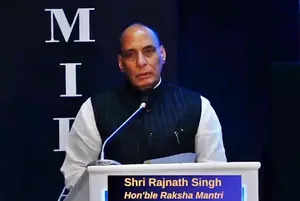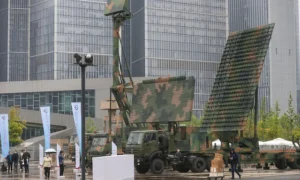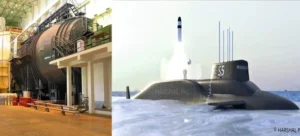In the last few weeks, the Indian Navy extended assistance to a number of merchant vessels in the Western Indian Ocean following attacks on them.
While Singh batted for peace and shared goodness, he assured that “we will not shrink from countering any threat that undermines our collective well-being, piracy and trafficking included.”
The defence minister referred to the recent incidents in the Western Indian Ocean and said they have brought to the fore some pressing challenges in the maritime domain, ranging from attacks on merchant shipping to piracy and hijacking attempts.
“India continues its proactive engagement and has been maintaining a sustained presence in the region to ensure safety and security of all shipping, irrespective of the flag on the ships and the nationality of the crew,” he said.
The defence minister said India is resolved to be the preferred security partner in the Indian Ocean Region. “It is our steadfast resolve to be the first responder and the preferred security partner in the Indian Ocean Region, and for the peace, stability and prosperity of the wider Indo-Pacific,” he said. Singh said India will continue to play the role of a ‘Vishwa Mitra’ (friend of the world) in forging meaningful partnerships with an aim to make the world a truly “connected and equitable habitat”.
The world community must collectively aspire for peace in this age of rules-based global order, he said, speaking at the formal opening ceremony of the 12th edition of the mega naval exercise.
Navy Chief Admiral R Hari Kumar and a distinguished gathering of ministers, ambassadors, chiefs of navies and representatives of maritime forces from over 50 friendly countries were present on the occasion.
Sharing his insights on the concept of ‘peace’, Singh asserted that the “absence of wars and conflicts is the most irreducible minimum element of peace”, according to the defence ministry.
The defence minister spoke of “negative peace” which, he said, often stems from dominance or hegemony, where one power imposes its will upon others.
He said such peace, not backed by fairness and justice, is what physicists and economists call “unstable equilibrium”.
Singh elaborated on what he called “cold peace” where parties do not kill each other in the open, but do their best to undermine one another, the defence ministry said in a readout.
He described cold peace as merely an interval between direct conflicts.
The defence minister was of the view that the concept of positive peace goes beyond the mere absence of direct military conflict and encompasses broader notions of security, justice, and cooperation.
“The positive peace is the shared peace of one and all, with the cooperation of one and all. There is no Indian peace or Australian peace or Japanese peace, rather it is the shared global peace,” he said.
“This sentiment was also eloquently set forth by our Prime Minister Narendra Modi when he said ‘This is not an era of war. But it is one of dialogue and diplomacy’,” he said.
Singh emphasised that the armed forces play a dual role — conduct wars as well as maintain peace and good order.
“Historically, navies and armies were established and maintained with the primary objective of extending political power through military conquests,” he said.
“Our historical experience informs us that the armed forces also play a significant role in preserving peace. It is seen in concepts and practices such as deterrence, conflict prevention, peace-keeping, and also in various humanitarian assistance efforts especially during disasters,” he said.
The defence minister described the Milan exercise as an attempt to build the much-needed fraternal bonds among friendly nations.
In his address, Admiral Kumar said the Milan exercise encapsulates and rejuvenates the unrelenting spirit of ‘Cohesion, Camaraderie and Collaboration.’
From five Indian Ocean navies in 1995 to 50 navies across the Indo-Pacific today, Milan reflects the growing stature and increasing importance of such collective and cooperative endeavours in the maritime domain, he said.
Admiral Kumar said the sea phase of the exercise commencing February 24 will witness Indian and foreign warships sailing in unison and participating in an array of operational drills.
“These are not merely naval exercises, but a testament to the collective expertise and strength we bring to the fore as maritime nations,” he added.
On the occasion, the defence minister launched the NISHAR communication terminal.
As communication forms an important link in achieving interoperability, the Indian Navy has developed MITRA terminals with Nishar application to connect all friendly partner navies, the defence ministry said.
Milan is a biennial multinational naval exercise which started in 1995 with the participation of Indonesia, Singapore, Sri Lanka and Thailand in consonance with India’s ‘Look East’ policy.
The harbour phase of the ongoing edition of the exercise commenced on February 19 and will end on February 23.
The harbour phase includes the opening ceremony, international city parade, international maritime seminar, Milan Tech Expo and table top exercise among others.
(You can now subscribe to our Economic Times WhatsApp channel)








